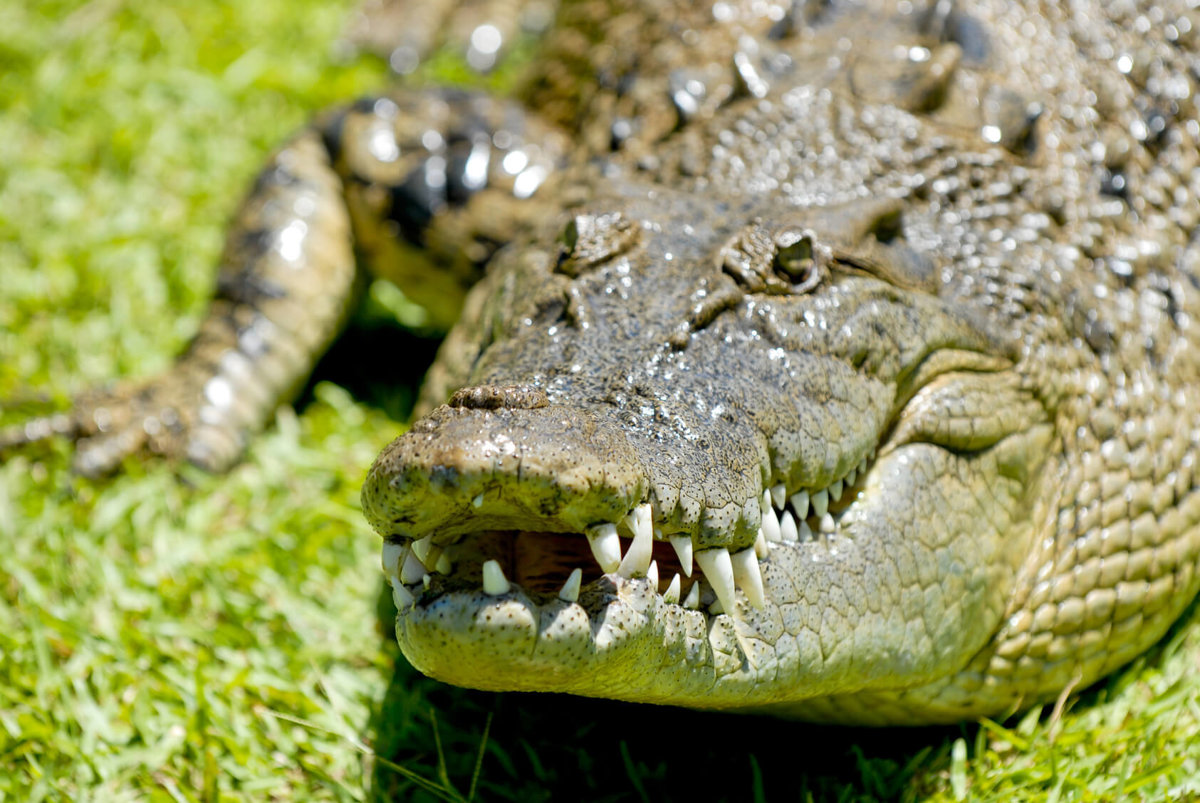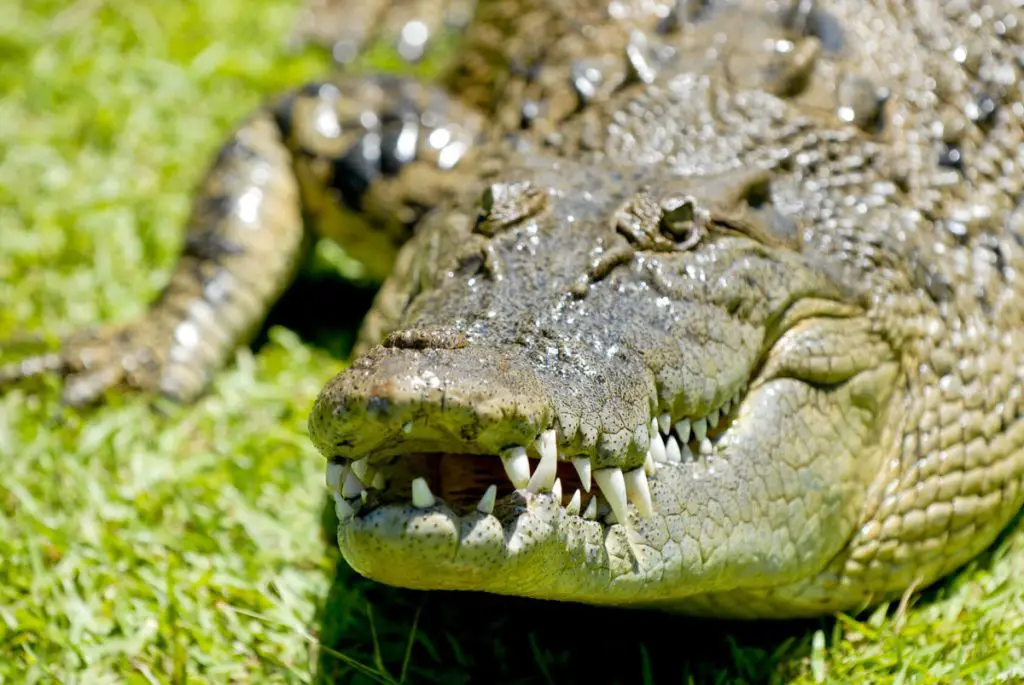Alligators are fascinating creatures that have been around for millions of years. They are known for their massive size, powerful jaws, and scaly skin. However, there is some confusion about whether alligators are amphibians or reptiles.
To understand the answer to this question, we need to take a closer look at the characteristics of both groups. In this article, we will explore the differences between amphibians and reptiles and determine once and for all whether alligators belong to one of these categories. So, let’s dive in and discover the truth about these ancient creatures.
Alligators are reptiles. They belong to the order Crocodylia, which includes crocodiles, alligators, caimans, and gharials. Alligators are cold-blooded and have scaly skin, lay eggs, and breathe air. They are excellent swimmers and can hold their breath for up to an hour underwater. Alligators are found in the southeastern United States and parts of China.

Are Alligators Amphibians or Reptiles?
Alligators are fascinating creatures that have been around for millions of years. They are often found in swamps, marshes, and rivers in the southeastern United States. But what are they, amphibians or reptiles? Let’s explore this question in more detail.
Classification of Alligators
Alligators are classified as reptiles. They belong to the order Crocodilia, which includes crocodiles, alligators, caimans, and gharials. Reptiles are cold-blooded vertebrates that have scales or scutes, lay eggs, and breathe air. Alligators have several characteristics that make them reptiles, including their scaly skin and ability to regulate their body temperature.
Alligator Anatomy
Alligators have a unique anatomy that sets them apart from other reptiles. Their bodies are covered in bony plates called scutes that protect them from predators and help regulate their body temperature. They also have powerful jaws that are lined with sharp teeth, which are used for catching and eating prey. Alligators have a four-chambered heart, which is more advanced than the three-chambered heart of amphibians.
Alligator Behavior
Alligators are known for their aggressive behavior, which is one reason why they are often feared by humans. They are territorial animals that will defend their territory against other alligators and potential threats. Alligators also have a unique way of communicating with each other, using vocalizations and body language to establish dominance and attract mates.
Alligator Habitat
Alligators are primarily found in the southeastern United States, in areas such as Florida, Louisiana, and Georgia. They prefer habitats such as swamps, marshes, and rivers, where they can find plenty of food and shelter. Alligators are also capable of living in brackish water, which is a mix of fresh and saltwater.
Alligator Diet
Alligators are carnivorous animals that eat a variety of prey, including fish, birds, mammals, and other reptiles. They are opportunistic feeders, which means they will eat whatever prey is available to them. Alligators have a unique way of hunting, using their powerful jaws to catch and hold onto prey until it is subdued.
Alligator Reproduction
Alligators have a unique reproductive system that involves building nests and laying eggs. Female alligators typically lay their eggs in a nest made of vegetation and mud. The eggs are then covered with more vegetation and left to incubate for several months. Once the eggs hatch, the baby alligators are left to fend for themselves.
Alligator Conservation
Alligators are considered a threatened species in some parts of the United States, due to habitat loss and hunting. However, they are also a conservation success story, with populations rebounding in recent years. Efforts to protect alligator habitats and regulate hunting have helped to ensure their survival.
Alligator Benefits
Alligators play an important role in their ecosystems, serving as top predators and helping to control populations of other animals. They also help to maintain the health of wetland ecosystems, by creating habitats for other species and controlling the growth of vegetation.
Alligators vs. Crocodiles
Alligators and crocodiles are often confused with each other, but there are some key differences between the two. Alligators have a wider, U-shaped snout, while crocodiles have a longer, V-shaped snout. Alligators also have a more limited range, primarily found in the southeastern United States, while crocodiles are found in many parts of the world.
Alligator vs. Amphibians
Alligators and amphibians are also often compared, but there are some significant differences between the two. Amphibians are cold-blooded vertebrates that have moist, permeable skin and require water to lay their eggs. Alligators, on the other hand, have scaly skin and lay their eggs on land. Alligators are also more advanced than amphibians, with a four-chambered heart and more advanced respiratory system.
In conclusion, alligators are fascinating creatures that are classified as reptiles. They have a unique anatomy, behavior, and habitat, and play an important role in their ecosystems. By understanding more about these incredible animals, we can better appreciate and protect them for generations to come.
Frequently Asked Questions
Here are some common questions people ask about alligators and their classification.
What Are Alligators?
Alligators are large aquatic reptiles that belong to the family Alligatoridae. They are cold-blooded and have a broad, flat head, a rounded snout, and a muscular body covered in bony plates called scutes. Alligators have powerful jaws with many sharp teeth, which they use to capture and kill their prey.
Although alligators share many characteristics with amphibians, they are classified as reptiles because they have a dry, scaly skin, and they lay eggs on land.
What Is the Difference Between Amphibians and Reptiles?
Amphibians and reptiles are both cold-blooded, but there are some key differences between the two classes of animals. Amphibians are characterized by their smooth, moist skin, their ability to breathe through their skin, and their dual life cycle, which involves an aquatic larval stage and a terrestrial adult stage.
Reptiles, on the other hand, have a dry, scaly skin, and they breathe through lungs. They also have a completely terrestrial life cycle, which means that they do not have an aquatic larval stage like amphibians do. Alligators are classified as reptiles because they have a scaly skin and a completely terrestrial life cycle.
What Are the Characteristics of Reptiles?
Reptiles are characterized by their dry, scaly skin, their ability to breathe through lungs, and their completely terrestrial life cycle. Unlike amphibians, reptiles do not have an aquatic larval stage. Reptiles also have a three-chambered heart, which is less efficient than the four-chambered heart of birds and mammals. Most reptiles lay eggs on land, although some give birth to live young.
Alligators share all of these characteristics with other reptiles, which is why they are classified in the same class.
What Are the Different Types of Reptiles?
There are four main types of reptiles: turtles and tortoises, snakes and lizards, crocodilians, and tuataras. Turtles and tortoises are characterized by their protective shells, while snakes and lizards are distinguished by their long, slender bodies. Crocodilians, like alligators, have powerful jaws and a broad, flat head, while tuataras are a type of reptile found only in New Zealand.
Alligators belong to the crocodilian family, which includes other large aquatic reptiles like crocodiles and caimans.
What Is the Importance of Classifying Alligators as Reptiles?
Classifying alligators as reptiles is important because it helps us to understand their biology and behavior. By grouping alligators with other reptiles, we can make predictions about their reproductive strategies, their habitat preferences, and their dietary needs. It also helps us to understand the evolutionary relationships between different groups of animals, which can inform conservation efforts and management practices.
Understanding the classification of alligators can also help us to appreciate their unique adaptations and their role in their ecosystems.
The Secret of Regeneration in… Alligators
In conclusion, it is clear that alligators are reptiles, not amphibians. While they share some similarities with amphibians, such as their ability to live both in water and on land, alligators have distinct characteristics that classify them as reptiles. These include their dry, scaly skin, their ability to regulate their body temperature, and their method of reproduction, which involves laying eggs with a hard, leathery shell.
Despite the confusion that may arise from the similarities between alligators and amphibians, it is important to understand the differences between these two groups of animals. By doing so, we can better appreciate the diversity of life on our planet and the unique characteristics that make each species special. Whether you’re interested in biology, ecology, or simply love learning about the natural world, understanding the classification of animals like alligators is an important part of expanding your knowledge and appreciation of the world around us.
In the end, whether you’re a scientist, a student, or simply curious about the world we live in, it is important to remember that alligators are reptiles, not amphibians. With their unique characteristics and fascinating behavior, these creatures are an important part of our ecosystem and a symbol of the incredible diversity of life on our planet. So the next time you see an alligator, take a moment to appreciate the incredible complexity and diversity of the natural world that surrounds us.

